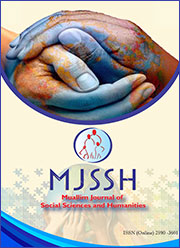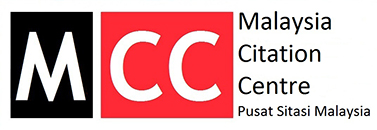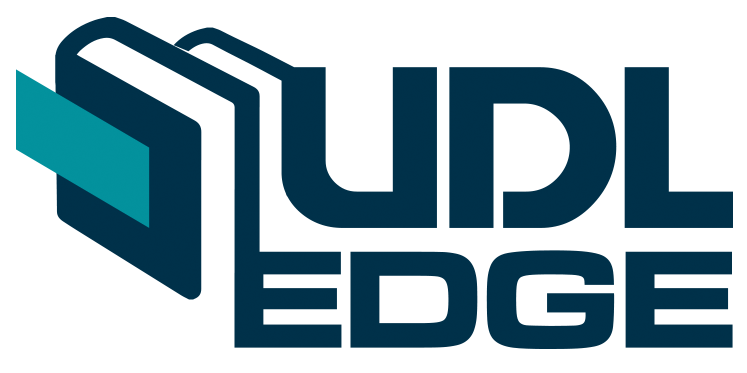A study of figurative language in women’s fashion advertising on Instagram
Keywords:
advertisement, figurative language, rhetorical language, women’s clothing advertisements, Instagram, types, functionsAbstract
The language of the advertisement is distinctive and unique to attract the reader’s attention and motivate them. Thus, figurative language in advertisement is one of the strategies needed to persuade the readers. However, the use of figurative language in advertisements in an insensitive way without knowing the types and functions of figurative language will make the advertisements less attractive and persuasive. This qualitative approach study attempts to analyse the type and functions of the figurative language used in women’s clothing advertisements on Instagram using content analysis. The theory of figurative language by McQuarrie and Mick (1996) is used to identify the types of figurative language used in this study. An analysis of a series of collections of women’s clothing advertisements from five online shops shows that there are eleven types of figurative language, namely rhyme, chime, assonance, alliteration, anaphora, epistrophe, antithesis, hyperbole, rhetorical question, metaphor, and homonym. The findings show that using figurative language in women’s clothing advertisements on Instagram would attract the readers, give a strong impression, memorable, and satisfy the customers’ needs. Overall, this study suggests that figurative language as a language of advertisement is essential to attract and persuade the readers and influence their purchasing decision. This study is also beneficial for the advertisers to create their advertisements using figurative language.
References
Akhter, S., Khan, K., Hussainy, S. K., & Khan, E. (2016). Measuring copywriting impact on brand identification. International Journal of Scientific and Research Publications, 6(12), 297-304. http://www.ijsrp.org/research-paper-1216/ijsrp-p6047.pdf
Albrighton, T. (2013). The ABC of copywriting. ABC Business Communications Ltd. http://svobodnapraktika.com/wp-content/uploads/2016/01/The-ABC-of-Copywriting.pdf
American Marketing Association. (n.d.). Advertising. https://www.ama.org/topics/advertising/
Apris, S. (2015). Finding meaning of figurative language use in advertisements for foreign language education. Digital Repository Universitas Jember, 1-98. http://repository.unej.ac.id/handle/123456789/70847?show=full
Arp, T. R., & Johnson, G. (2021). Perrine’s sound and sense: An introduction to poetry 11th edition by Arp, Thomas R., Johnson, Greg (2004) Hardcover (11th ed.). Heinle & Heinle Publishers. https://www.sps186.org/downloads/basic/509736/poetry_sound_and_sense_full_text.pdf
Bexfield, C. (2020, June 18). Understanding Play of Colour and Patterns in Opal Gemstones. The Gemmological Association of Great Britain. https://gem-a.com/gem-hub/gem-knowledge/colour-patterns-opal-gemstones-rare
Djafarova, E. (2017). The role of figurative language use in the representation of tourism services. Athens Journal of Tourism, 4(1), 35–50. https://doi.org/10.30958/ajt.4.1.3
Fatimah, N. (2019). Figurative language analysis of KPU's slogan in Instagram. Repository UMSU, 1-41. http://repository.umsu.ac.id/handle/123456789/3110
Haya, I. (2019). The study of rhetoric of fashion products advertisement on Instagram. Digital Library UIN Sunan Ampel, 1-65. http://digilib.uinsby.ac.id/33714/
Istiqomah, A. (2014). An analysis of the figurative expressions and the meanings used in advertisements in InStyle magazine. UDiNus Repository, 1-10. http://eprints.dinus.ac.id/8275/1/jurnal_13387.pdf
Joseph, K. O., Omotayo, A., Mosunmola, A., & Taiye, B. (2016). Marketing concept and satisfaction of consumer needs: The Nigerian consumer experience. Researchjournali’s Journal of Marketing, 4, 2–15. https://www.researchgate.net/publication/310368622_Marketing_concept_and_Satisfaction_of_Consumer_Needs_The_Nigerian_Consumer_Experience
Kaya, E. (2015). The role of reading skills on reading comprehension ability of Turkish EFL students. ÜNİVERSİTEPARK Bülten, 4(1–2), 37–51. https://doi.org/10.12973/unibulletin.412.4
McQuarrie, E. F., & Mick, D. G. (1996). Figures of rhetoric in advertising language. Journal of Consumer Research, 22(4), 424–438. https://doi.org/10.1086/209459
Michalik, U., & Michalska-Suchanek, M. (2016). The persuasive function of rhetoric in advertising slogans. Hrcak Mascot, 6(1), 45-58. https://hrcak.srce.hr/index.php?id_clanak_jezik=240233&show=clanak
Oyesomi, K. O., & Salawu, A. (2019). Assessing the Uniqueness of Indigenous Language in Advertising: Analysis of Figurative Language Used in Selected Telecommunication Yoruba Advertisement in Nigeria. The Qualitative Report, 24(10), 2574-2591. https://doi.org/10.46743/2160-3715/2019.3878
Perez Sobrino, P, Littlemore, J & Houghton, D 2018, 'The role of figurative complexity in the comprehension and appreciation of advertisements', Applied Linguistics. https://doi.org/10.1093/applin/amy039
Rohani, T., Arsyad, S., & Diani, I. (2018). Semantic analysis of figurative language expressions in "feature" of The Jakarta Post. Journal of Applied Linguistics & Literature, 1(1), 97–114. https://ejournal.unib.ac.id/index.php/joall/article/view/6168
Ruslinah. (2017). A study of the figure of speech in cigarette advertisement slogans on the Internet. USD Repository, 1-70. http://repository.usd.ac.id/9305/
Schneider, Z., Whitehead, D., Lobiondo-Wood, G., & Haber, J. (2016). Nursing research: Methods and critical appraisal for evidence-based practice (5th ed.). Elsevier. https://books.google.com.my/books?id=lNvWDwAAQBAJ&printsec=frontcover&source=gbs_ge_summary_r&cad=0#v=onepage&q&f=false
Seah, J. (2018, July 30). 21 Essential Singlish Phrases You’ll Need in Singapore. Culture Trip. https://theculturetrip.com/asia/singapore/articles/21-essential-phrases-youll-need-in-singapore/
Shariq, M. (2020). Tools & Techniques used in the Language of Advertisements: A Linguistic Analysis of Indian TV Commercial Ads. Media Watch. https://doi.org/10.15655/mw/2020/11092020
Stathopoulou, A., & Balabanis, G. (2016). The effects of loyalty programs on customer satisfaction, trust, and loyalty toward high- and low-end fashion retailers. Journal of Business Research, 69(12), 5801–5808. https://doi.org/10.1016/j.jbusres.2016.04.177
Widyanti, N. (2013). A stylistic-pragmatic analysis of figurative language in Harper's Bazaar magazine advertisement. Repository Universitas Negeri Yogyakarta, 1-95. https://core.ac.uk/download/pdf/33518176.pdf
Wörfel, S. (2019). Brand-awareness through marketing on Instagram – An Instagram marketing strategy for ONIMOS Clothing. Saimaa University of Applied Sciences, 1–55. https://www.theseus.fi/handle/10024/230887
Yan, R. L. S., Azmi, N. J., & Shuib, S. M. (2019). Content analysis of figurative language used in newspaper advertisement slogans. Journal of Qualitative Social Sciences 2019, 1(1), 20–28. http://www.asianscholarnetwork.org/
Yaseen, M., S., Sayyed, S., W., Ibrahim, H., M. (2022). Modes of Persuasion for Women in English and Arabic Advertisements. Eurasian Journal of Applied Linguistics, 8(2), 180-190.
Zulkifly, H. Z., & Firdaus, N. (2014). Persuasion and the online consumers: Investigating copywriting strategies in native advertisements. International Journal of Social Science and Humanity, 4(6), 430–434. https://doi.org/10.7763/ijssh.2014.v4.393
Published
 Abstract Display: 0
Abstract Display: 0  PDF Downloads: 0
PDF Downloads: 0 Issue
Section
Copyright (c) 2024 Nurul Farihah Rosli , Nur Nabila Azman

This work is licensed under a Creative Commons Attribution-NonCommercial 4.0 International License.














 This work is licensed under a
This work is licensed under a